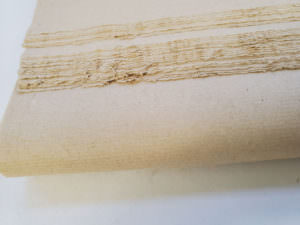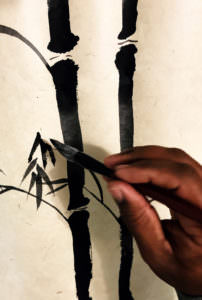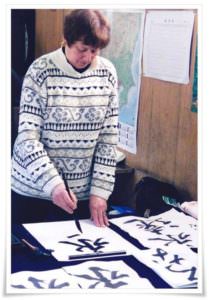Character Appeal

Xuan – Super soft, absorbing ink consistently and evenly Pronounced “shwen,” this paper provides a pristine surface for writing and painting. Handmade in historic, Anhui Province, China, Xuan has stood the test of time as the ink of ancient scrolls and paintings still retaining its vibrancy to this day. For all levels, this is a quality paper for practice and finished work and very affordable. Mini Xuan paper is a charming handmade paper for writing or incorporating mixed media. Made from recycled materials, including bamboo waste paper, here is a great paper for beginners. Economical and made to support hand/eye development for more solid practices. For all levels, this paper works widely for practice and finished work.
Papers great for Asian-style calligraphy (shodō), sumi painting, and fish printing (gyotaku)


A lovely assortment includes Kihosen Kana, handmade in Japan with a mix of mitsumata, bamboo, and kōzo fibers. This professional-grade sumi painting or calligraphy paper comes folded and may require a warm iron or just leave rolled for a few days. Currently we sell scroll-sized Kana paper in 10-sheet sets.
Soonji made from white Korean mulberry paper (hanji) is also an excellent choice. There is no sizing which makes it absorbent and ideal for calligraphy, Sumi-e, and brush painting amongst other uses.
Sunn is a very traditional paper developed in the 8th century for writing religious script and Persian miniature paintings. It is made from raw fermented and cooked hemp and then burnished by hand. The surface is coated with wheat starch, a sizing of egg-white, and alum, burnished with agate to provide a naturally sized surface with an incredible sheen.


Yin Yang Dochim Hanji is a beautiful, heavyweight, and burnished mulberry paper. Fibers are compacted and “small-pored,” making them great for applying ink with no bleeding.
Rustic lokta papers from Nepal are not technically burnished but lokta fiber once made into a sheet is naturally small-pored. Japanese kōzo papers with a bit of internal sizing (sizing added to the vat before formation) are suitable for beginners to experts. If you are unsure what type of kōzo to use, start here for its versatility and price.

Take a step toward further experimentation! These depicted here are some marvelous papers to explore.

Sizing – Alum can be a key constituent of your work. When the paper is called “sized” there is usually alum involved. Traditional sizing or size is made with a recipe of animal skin glue and alum to create a barrier in or on the paper so ink does not absorb into the fibers. (Here’s a vegan version to DIY sizing).
Sized papers are less absorbent and more forgiving of water-based techniques, lending themselves to multiple paint and ink washes/modifications. In other words, sized papers “hold up” against liquids and pigments. Without sizing, paper can be highly absorbent and valued for depth and vividness, allowing painters and calligraphers further complexity to their imagery and characters. Professional brush painters look for the rate of ink absorption. Plus they look for a well-formed sheet which will have an even ink bleed no matter where you place your wet brush. Many of the pros use paper without sizing.
Burnished, pressed, or “calendered” paper surfaces will often be sufficient to slow or stop paint from unwanted bleeding. You can bet that most papers from Asia are not sized.
 fricka-artist/writer/editor • our papers help tell your story • want more?
fricka-artist/writer/editor • our papers help tell your story • want more?

